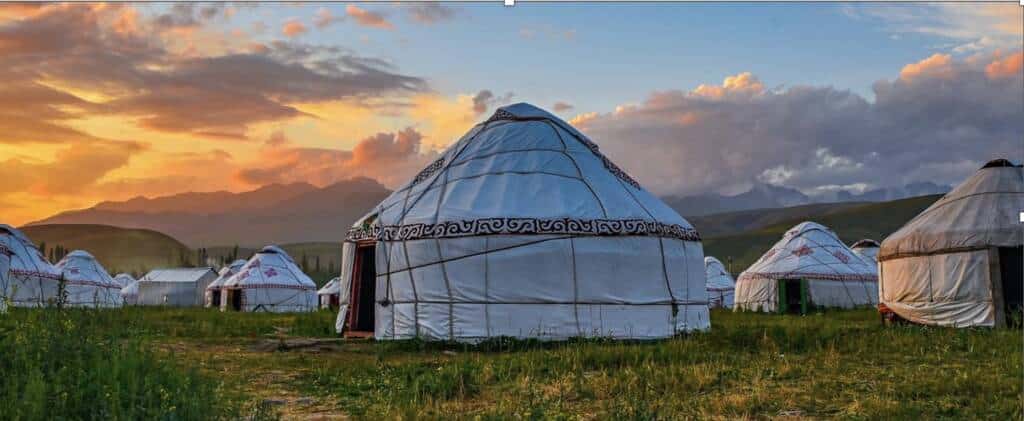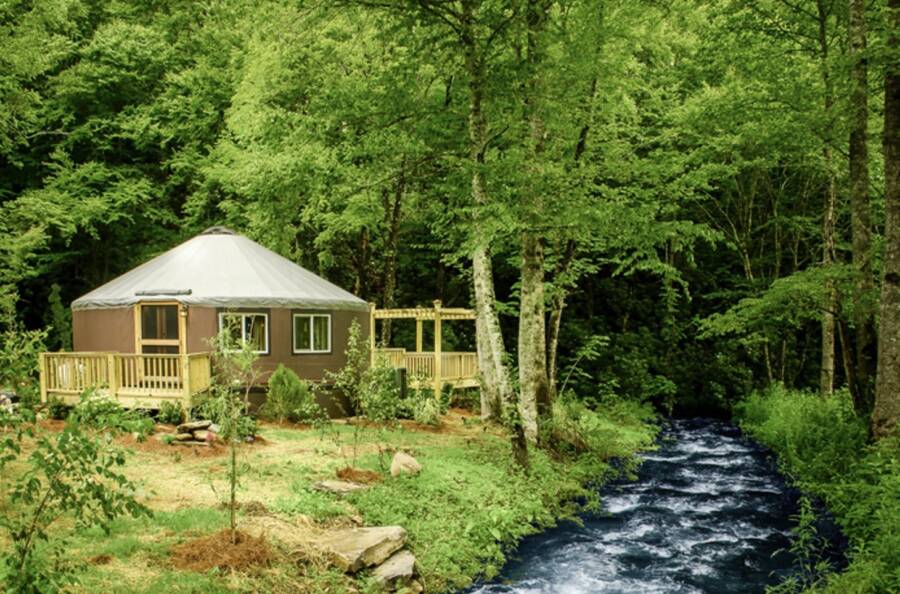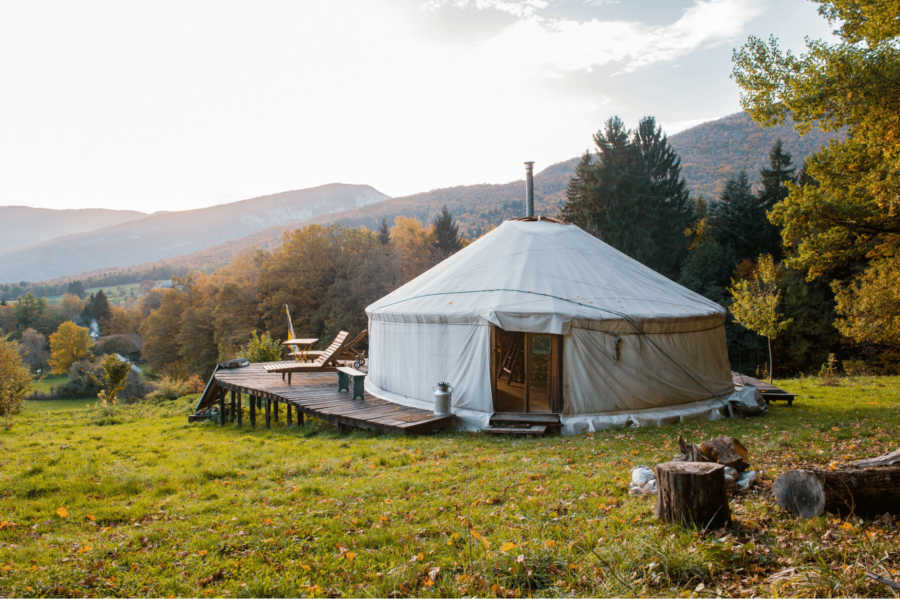Discover the fascinating world of nomadic dwellings, where living on your own is an art form. Learn about
the creativity behind these portable houses and the way of life of those who value freedom in their lifestyle.
The art of portable living can be seen in nomadic houses, a fascinating combination of architecture and movement.These inventive homes challenge conventional ideas of what a home is, in a society that frequently benefits from stability and permanency. Numerous societies have adopted nomadic lifestyles for their adaptability, efficiency, and connection to nature throughout history, from ancient civilizations to the present. We explore the history, cultural
importance, and contemporary interpretations of these extraordinary dwellings as we look into the fascinating world of nomadic existence in this article.
What are Nomadic Dwellings?
Nomadic dwellings have been around for centuries and have been utilized by various cultures worldwide. From yurts in Mongolia to teepees in North America, these portable living spaces have served as practical solutions for those who lead a nomadic lifestyle, these dwellings are portable homes that can be easily assembled and disassembled, allowing for quick and efficient relocation, and these structures have been used by nomadic tribes for centuries as they moved from place to place in search of resources and shelter, these portable homes have also been used by explorers and adventurers to provide shelter during expeditions in remote locations

https://ecobnb.com/blog/2020/04/yurt-holidays-nomadic-experience/.
The History of Nomadic Dwellings
Communities of nomads have been constructing amazing structures that blend in with their surroundings for thousands of years. From the teepees of Native Americans to the yurts of Central Asia, in the Middle East, Bedouin tents have been used by nomadic tribes for centuries, these tents were made from goat hair and provided shelter from the harsh desert environment, in North America, teepees were used by indigenous tribes for shelter and were made from animal hides stretched over wooden poles, whereas in Mongolia, yurts were used as portable homes by nomadic tribes and were made from felt and wood. These structures were made to be simple to assemble, disassemble, and carry. They had a tight relationship with nature and had to travel with the seasons, which is reflected in the intimate connection between their nomadic way of life and their homes.
Some Notable Examples of Nomadic Lifestyle (Nomadic Yurts)
Yurts:
The yurt which is movable and round, is a symbol of Mongolian culture. It is a beautiful answer for tough steppes due to its foldable lattice structure and felt cover. Also, know more about Mongolian yurts as the perfect accommodation option at: Yurts
Teepees: A Plains Indian invention, the teepee’s conical shape allowed for quick assembly and disassembling allowing for a semi-nomadic lifestyle based on hunting and gathering.
Bedouin tents: These tents are made of braided goat hair and are a representation of the nomadic way of life in Arabia. They allow for fast adaptability to the desert environment while establishing a sense of togetherness.
Benefits of living in a nomadic lifestyle (Nomadic Yurts)
There are many different benefits and experiences to living in a nomadic home like a yurt, tent, camper van, or other temporary structure. The following are some benefits of this way of life:
- Leisure and Versatility: Nomadic lifestyles allow you to experience a level of freedom and flexibility that may not be possible in more typical fixed lifestyles. You may quickly change your location if you want to see something new.
- Simple Lifestyle: A mobile existence frequently demands decluttering your stuff, which promotes a simple way of living. As a result, there may be less clutter, more consumer awareness, and an emphasis on experiences rather than material goods.
- Connection to Nature: Because you have the option of choosing to live in stunning natural settings and changing your surroundings as you like, nomadic houses frequently make you feel more at one with nature. Increasing outdoor activities, a closer relationship with the environment, and an improvement in mental and physical health can result from this.
- Cost-Effectiveness: Depending upon your preferences and ways of life, nomadic living may be more affordable than conventional housing. You might save money on electricity, mortgage or rental payments, and other fixed costs. The price of travel, maintenance, and gasoline must also be taken into account.
- Cultural and personal development: Traveling and interacting with diverse communities while living a nomadic lifestyle exposes you to a variety of cultures, customs, and ways of life. This might result in more flexibility, personal development, and a broader perspective on the world.
- Lowering of the Environmental Impact: Compared to bigger, permanent dwellings, smaller, movable homes often have a reduced environmental impact. You have the capacity to embrace sustainable behaviors because you consume fewer resources, create less waste, and do so.
- Transportation: Being a nomad is an experience in and of itself. You get to see new locations, interact with interesting people, and participate in activities that you otherwise may not have had the opportunity to do. It may arouse curiosity and offer a sense of adventure.
- Creativity and adaptation: They are essential for designing and erecting your mobile home as well as for adjusting to various settings and weather patterns. Your inventiveness and ingenuity may be inspired by this.
- Life Is Simpler and Stress Is Lower: Plenty of people discover that spending time in a nomadic home makes life simpler and lowers stress. Your mental and emotional load could be lessened if you have fewer goods and obligations.
- Unconventional Lifestyle: Living as a nomad gives you the freedom to overcome societal conventions and expectations and live a life more in line with your beliefs and objectives.
In addition to that, it’s crucial to keep in mind that living a nomadic lifestyle has its own set of challenges and considerations, including the need to locate acceptable lodging, handle practical concerns, and maybe go without a reliable social support system. It’s recommended to conduct an extensive study and make plans for both the advantages and potential disadvantages of a nomadic existence before committing.
Lifestyle and Cultural Significance
Freedom and an Emotion of Nature: Nomadic homes are the perfect representation of the desire to be in touch with the cycles of the planet and the freedom to travel. Nomads have proven to have a keen awareness of their environment and a mastery of the art of survival, whether they are herding animals or selling things.
Communities and Flexibility: Interdependence is a common driving force in nomadic communities, as shared environments build solid social relationships. This way of existence is built on adaptability, which enables these communities to adjust quickly to societal and environmental changes
Designs of Nomadic Yurts
Nomadic structures are designed to be portable and easy to assemble and disassemble. They are often made from lightweight and durable materials such as canvas, wood, or felt. The design of these dwellings is often influenced by the climate and environment in which they are used. For example, yurts in Mongolia are designed to withstand harsh winter conditions, while teepees in North America are designed to provide ventilation in the hot summer months. Read more to know about camping in teepees at: https://yurtspaces.com/tepees-a-unique-camping-experience-for-outdoor-enthusiasts/.
Image Source: Flickr.
Modern Meanings of the Nomadic Spirit
Modern Nomads and Nomadic Life: The nomadic mentality is still alive and well in modern society. Digital nomads, those who make use of technology to work virtually while traveling, are the perfect example of how modernity and nomadic lifestyles can coexist. Recreational vehicles (RVs) and compact houses have also come to represent the modern nomadic way of life by giving people the freedom to travel while maintaining their comforts at home.
Sustainable living and simplicity: Nomadic lifestyles are harmoniously in line with sustainability and simplicity. For those looking for environmentally friendly options, portable buildings are an attractive option because they frequently prioritize resource efficiency and have little environmental effect.
Modern-day uses: Nomadic shelters are still used by nomadic tribes all over the world, but they have also found some new and modern uses, For example, some people are choosing to live in tiny homes that are portable and can be easily transported. These tiny homes often feature the same design principles as traditional nomadic houses, such as lightweight and durable materials and efficient use of space.
In conclusion
The mix of inventiveness, flexibility, and cultural identity seen in nomadic habitations is ageless. These portable dwellings have a rich history and a practical design that has been utilized by cultures all over the world, whether you’re a nomadic traveler or someone who seeks out a simpler way of living, these dwellings offer a versatile and practical solution, with their lightweight and durable design, these structures are the perfect portable home for those who want to live life on the move, also these portable structures continue to capture our imagination and surprise our conceptions of what is a home, whether they are the immense views of the Mongolian steppes or the busy cityscapes of today’s nomadic lifestyles. The beauty in accepting change, forming connections, and finding comfort in the trip itself is brought home to us by the art of portable living. The spirit of nomadic housing calls us to explore, learn, and use the environment as our canvas as we manage an ever-changing world.
FAQs
- What materials are used to construct nomadic dwellings?
- Nomadic dwellings are often made from lightweight and durable materials such as canvas, wood, or felt.
- What are the benefits of living in a nomadic dwelling?
- Living in a nomadic dwelling allows for quick and efficient relocation, making it ideal for those who lead a nomadic lifestyle or those who enjoy outdoor activities.
- Can nomadic dwellings be used for permanent living?
- While nomadic structures are designed for portable living, some people choose to live in them permanently, particularly those who seek a minimalist and sustainable lifestyle.
- Are there any drawbacks to living in a nomadic dwelling?
- Nomadic structures may not offer the same level of comfort and amenities as traditional homes and may require frequent maintenance and repairs.
- Can nomadic dwellings be customized to fit individual needs?
- Yes, nomadic structures can be customized to fit individual needs and preferences, allowing for a personalized and unique living experience.
Writer: Poonam Soni



